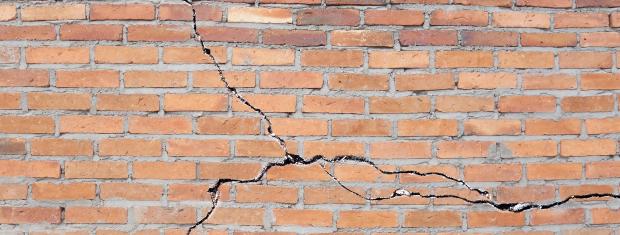
Top 8 Signs of Structural Damage in Your Home
Whether you are buying your first home or notice something out of the ordinary in your existing home, signs of structural damage should be a huge concern. Things that may look like small problems can quickly evolve into large, potentially dangerous problems that will result in costly repair bills:
1. Cracks or Bulging on Walls and Ceiling
Not every wall or ceiling crack indicates structural damage, per sey, but you should keep an eye on them. Over time, small cracks can evolve into something more problematic. Large cracks paired with a sagging ceiling or cracks above doorways in a step pattern are a sign there is in fact a more serious problem.
2. Soil Pulling Away from House Walls
Soil expands and shrinks throughout the seasons. If you notice soil pulling significantly away from the house (check patio, porch and deck areas too), it can signal that the home’s foundation was not laid properly.
3. Cracks in Chimney
It is easiest to spot cracks in the mortar and/or in the bricks of your chimney from the outside of your home. Similar to other exterior walls, cracks in your chimney are a sign that your home is shifting and placing excessive pressure on the bricks.
4. Uneven Gaps on Windows and Doors
Walls with windows and doors are more vulnerable to pressure because of the holes that have been cut into them. Oftentimes, areas around windows and doors will show signs of structural damage before any other areas of your walls:
- Uneven gaps around doors
- Doors and windows won’t open or close smoothly
- Doors and windows won’t lock properly
- Doors and windows are separating from the wall
- Doors won’t stay closed
5. Sagging, Sloping or Cracking of Floors
Shifts in your home’s foundation will be apparent when inspecting your flooring for sagging, sloping or cracking. The greater the movement, the more likely your floors will show signs of structural imperfections.
6. Sagging Roof and Roof Leaks
If your roof is in its prime and hasn’t reached the end of it’s life cycle, there’s no reason you should see sagging or uneven roof lines. This indicates that there are issues with the roof structure itself. Many things can damage your roof structure, such as:
- Timber frame movement
- Weather-induced damage
- Lack of sufficient maintenance
- Removal of load-bearing walls
- Termite damage
- Incorrect sizing of framing timbers
7. Damp Subfloor
A damp subfloor indicates a lack of sufficient ventilation in your floors. The dampness can lead to rotting floor timbers, which can be spotted by surface stains and signs of deterioration.
8. Crumbling Concrete/Brick
If you see signs of structural damage in your home similar to those listed above, you should consult a licensed professional to conduct an in-depth home inspection and recommend the best approach to correcting the issue.


